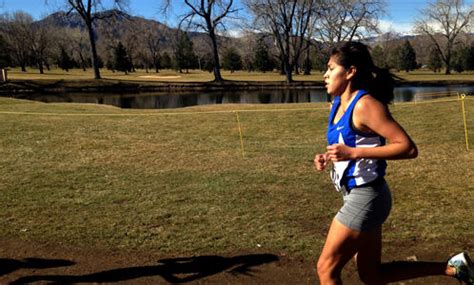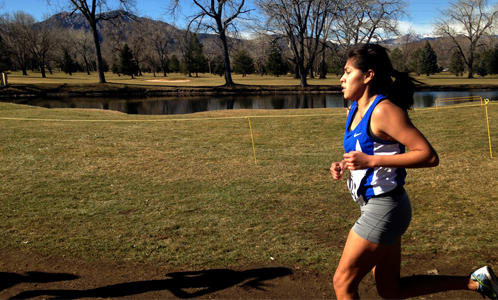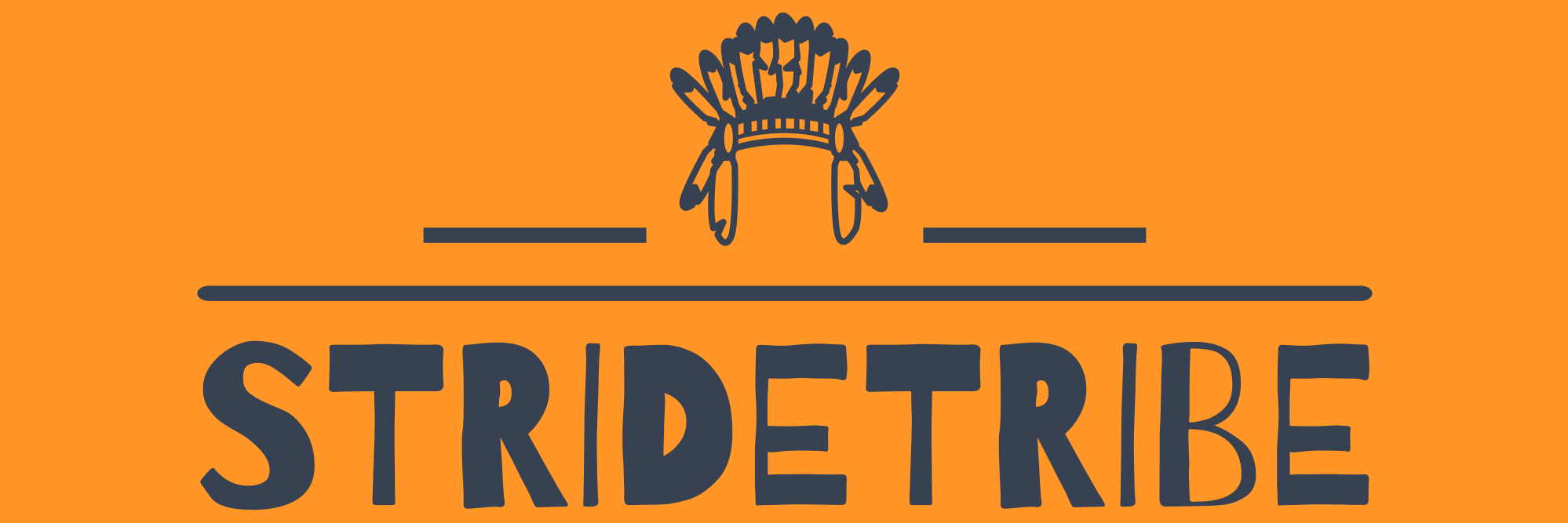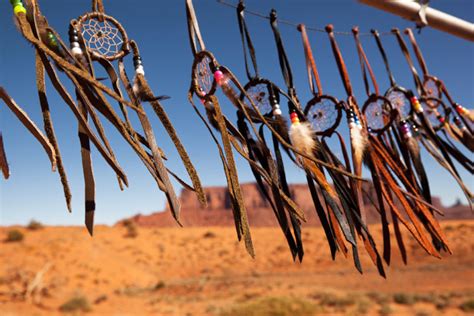Table of Contents

Native American running traditions enjoy a colorful history few know of. Running has been an integral part of Native American culture for generations, deeply embedded in their traditions and way of life. With roots in various tribes across the country, the practice of running served multiple purposes, from spiritual to practical. For Native Americans, running is not just a form of exercise or a feat of endurance but a means of connecting with the earth, the sky, and themselves.
In many tribes, the running tradition begins early in life, as the wisdom of their ancestors is passed down. The Navajo, for instance, believe that running places them both on the earth and in the sky, drawing strength from the first light of the day and empowering them to face any challenge. The richness of this tradition predates the modern marathon movement by many millennia, and its value is recognized even today by practitioners of various disciplines, including Harvard University’s Daniel Lieberman, who has studied the significance of running in different cultures.
As running continues to play a vital role in Native American culture, it serves as a testament to the resilience and adaptability of their practices. By understanding and appreciating these traditions, we can uncover the deeper meaning behind running and discover how it connects us to the world around us.
Historical Significance of Running in Native American Cultures
Rituals
Running has had a crucial role in Native American cultures for generations. The Southwest region of North America, including present-day Mexico, has many indigenous tribes who have historically relied on running for various rituals. For example, the Navajo and Hopi tribes used long-distance running for ceremonial purposes and to maintain connections with their environment and deities.
One of the most famous running tribes in this region is the Tarahumara Indians, who are well-known for their extraordinary long-distance running abilities. They see running as a spiritual practice that connects them with their ancestors, the natural world, and each other. The Hopi tribe participates in strenuous and sacred running events, which serve as a form of prayer and a means of connecting with their spiritual beliefs.
Communication
In addition to religious significance, running was vital for communication and survival amongst Native Americans. With vast distances between settlements, indigenous people in North America relied on messengers to send and receive information quickly. Long-distance running was crucial for delivering essential information or seeking help in emergencies. For the Iroquois Confederacy, an alliance of several tribes in what is now the northeastern United States, running was fundamental to diplomacy, warfare, and maintaining relations between tribes.
The Navajo, known for their exceptional running abilities, employed swift messengers during times of conflict. These runners traversed rugged terrains to deliver critical information between camps. Their incredible endurance allowed them to cover large areas efficiently, making them invaluable assets to their tribes.
In conclusion, running has been deeply embedded in the lives and beliefs of many Native American tribes in North America. It served crucial roles in religious rituals, communication, and survival for the indigenous people, including tribes such as the Navajo, Hopi, Tarahumara Indians, and the Iroquois Confederacy.

Famous Native American Runners and Influential Figures
Billy Mills, an Oglala Lakota Sioux runner, is perhaps one of the most famous Native American athletes. He won the gold medal in the 10,000-meter race at the 1964 Tokyo Olympics, setting a new world record. Mills’ victory made him the first and only American to win this event at the Olympics. He is a true inspiration in the world of running, breaking barriers and inspiring future generations of Native American athletes. Learn more about Billy Mills here.
Jim Thorpe, a Sac and Fox Nation Native American, was another influential figure in the world of sports. He won two gold medals at the 1912 Stockholm Olympics in both the pentathlon and decathlon events. An exceptional all-around athlete, Thorpe also played professional football, baseball, and basketball. More about Jim Thorpe can be found here.
Lewis Tewanima, a Hopi Indian from Arizona, was an outstanding long-distance runner who made his mark at the 1908 and 1912 Olympics. He won the silver medal in the 10,000 meters event in the 1912 Stockholm Olympics, finishing behind the legendary Hannes Kolehmainen. Read more about Lewis Tewanima’s achievements here.
Tom Longboat, an Onondaga runner from the Six Nations Reserve in Canada, was another influential figure. He set the world record for the marathon in 1907 and won the prestigious Boston Marathon. Longboat was known for his incredible endurance and his unique training methods, which later inspired many other runners. Learn more about Tom Longboat’s accomplishments here.
Louis Tewanima, a cousin of Lewis Tewanima, was another famous Hopi Indian runner who participated in the 1908 and 1912 Olympics. He finished ninth in the 1908 Olympic Marathon and won a silver medal in the 10,000 meters event in the 1912 Stockholm Olympics. Louis Tewanima was known for his exceptional running abilities, including reportedly running 120 miles just to watch trains pass. Find out more about Louis Tewanima’s running career here.
Native American Running Races and Programs
Wings of America
Wings of America is a non-profit organization that promotes running and healthy lifestyles among Native American youth. They provide training programs and support for athletes from various tribal communities, with the aim of encouraging them to participate in competitive running events like marathons and cross-country races. Founded in 1987, Wings of America has supported thousands of participants from over 100 tribes in their athletic pursuits.
The organization offers a variety of programs including Running and Fitness camps, youth outreach initiatives, and scholarship opportunities for college-bound athletes. These camps focus on teaching proper running techniques, injury prevention, and the importance of maintaining physical and mental health. Wings of America also supports Native runners in participating in the prestigious Boston Marathon by sponsoring a team of athletes from different reservations each year.
Through their endurance running programs, Wings of America not only helps to preserve and celebrate Native American running traditions, but also raises awareness about the unique challenges faced by Indigenous communities in the United States. Running is often seen as a way for Native people to connect with their land and heritage, as well as promote wellness and resilience among their communities.
In recent years, Wings of America has expanded its mission to encourage college attendance and promote educational opportunities for aspiring Native American athletes. These efforts are aimed at addressing the underrepresentation of Indigenous people in higher education and providing resources for Native youth to succeed both academically and athletically.
To summarize, Wings of America focuses on:
- Promoting running and healthy lifestyles among Native American youth
- Offering training programs and support for athletes from various tribes
- Encouraging participation in competitive running events
- Providing scholarship opportunities for college-bound athletes
- Sponsoring a team of Native runners in the Boston Marathon
- Raising awareness about challenges faced by Indigenous communities
The Tarahumara – A Unique Running Culture
Rarámuri and Their Running Techniques
The Tarahumara are an indigenous people from the Chihuahua region in northwestern Mexico, also known as the Rarámuri. They are renowned for their long-distance running traditions and abilities. One factor that contributes to their exceptional running skills is their footwear, called “huaraches.” These minimalist sandals allow the Rarámuri to develop strong foot muscles while running on diverse terrains.
The Rarámuri’s running techniques have been studied and admired for their efficiency and resilience. They employ a midfoot strike, which is believed to reduce the impact on their joints and lower extremities. This characteristic running style has been linked to better endurance and a decreased likelihood of running-related injuries.
Copper Canyons and the Born to Run Phenomenon
The Tarahumara reside in the remote Copper Canyons region, where their running abilities are not only extraordinary but also necessary for their daily lives. Due to the isolated nature of their settlements, the Rarámuri rely on running as a means of transportation, communication and survival.
The Tarahumara gained global attention with the publication of Christopher McDougall’s book “Born to Run.” The book tells the story of McDougall’s interactions with the Tarahumara and their extraordinary running abilities. It also delves into their traditional sport called the Rarajipari, a running game where participants chase a wooden ball.
The “Born to Run” phenomenon not only shined a light on the Tarahumara’s unique running culture but also sparked a movement in the running community that encouraged a more natural running form and minimalist footwear. Many runners have been inspired by the Tarahumara’s approach to running and have sought to incorporate their techniques into modern athletic training.
Running for Health, Wellness, and Social Impact
Native American running traditions have long embraced the concept of movement as medicine. Programs like Running Medicine aim to promote wellness in mind, body, spirit, and social aspects through culturally grounded running programs. These initiatives began in 2016 in New Mexico and have since expanded to other locations.
One of the significant challenges faced by Native American communities today is the high prevalence of health issues, such as diabetes and alcohol abuse. Integrating running into cultural practices can help combat these conditions while simultaneously instilling a sense of pride and self-esteem among participants.
Running programs have been known to provide mental health benefits for individuals from diverse backgrounds. As many American Indians face societal stereotypes and marginalization in various aspects of life, running can serve as a meditative outlet that strengthens emotional well-being and resilience, as described by Indigenous runners featured in a Runner’s World article.
Organizations such as Wings of America, under the leadership of Dustin Martin, take a unique approach to address the health and social challenges faced by young Native American runners. Instead of focusing on the problems, the organization promotes positive youth development and cultural connectedness.
Some projects supported by Tribal Practices for Wellness in Indian Country explicitly aim to increase the consumption of healthy traditional foods, physical activity, and social connectedness within Native communities. These programs showcase how participating in running activities can create a ripple effect, influencing overall wellness and communal strength.
In conclusion, Native American running traditions can have profound health, wellness, and social impact on the individuals and communities that participate in them. By focusing on cultural connectedness and embracing movement as medicine, running programs can help address various challenges faced by American Indian communities, moving towards a holistic approach to health promotion.
Running and Indigenous Activism
The traditions of running in Native American communities have deep historical roots and are often closely tied to activism and advocacy for indigenous rights. One notable example is the connection between the sport and the protection of the Bears Ears National Monument. In recent years, many indigenous runners have participated in events and initiatives to raise awareness about the importance of protecting sacred lands.
Running has become a powerful tool for Indigenous activists to raise awareness about environmental protection and the preservation of their cultural heritage. For example, the Wings of America organization organizes running programs for native youth, emphasizing the connection between physical fitness, cultural identity, and advocacy.
In Indian Country, running events such as the Native American Marathon and the Bears Ears Prayer Run have played a significant role in supporting the local communities and advocating for the rights of Indigenous people. These events not only promote a healthy lifestyle and respect for ancient running traditions but also foster a deeper understanding of the connection between people, land, and spirituality.
One of the major issues in indigenous activism is the protection of sacred lands like Bears Ears National Monument. The monument, which spans over 1.3 million acres in southeastern Utah, is considered a living cultural landscape significant to many Native American tribes. Runners from various Native American nations have engaged in relay races and long distance runs to protest any attempts to reduce the monument’s size and raise awareness about its significance to Indigenous peoples.
Running in indigenous communities is deeply connected to a respect for Mother Earth. As runners traverse through various landscapes, they are reminded of their ancestors’ historical presence in these lands. By combining running with activism, Indigenous peoples continue to carry on their long-standing tradition to protect and care for their environment, highlighting the importance of preserving their cultural heritage and building a healthier future for the next generations.
Challenges, Oppression, and Resilience in Native American Running
For centuries, Native American tribes have had strong traditions of running, including the Diné, Oglala Lakota, Navajo, and others. Despite historical challenges, these communities continue to cultivate and celebrate their running traditions while overcoming obstacles imposed by both external forces and internal struggles.
Native American tribes have faced ongoing oppression and discrimination from the U.S. government, resulting in forced relocations, land seizures, and various other policies that have disrupted indigenous cultures and traditions. The tribal culture, community, and environment are connected, and these challenges posed by colonialism have had a significant impact on Native American running traditions. The Navajo culture, for example, has struggled to maintain their running heritage amidst the assimilation and land seizures that have come with American expansion.
Even though many obstacles have arisen, some tribes like the Narragansett in Rhode Island have managed to maintain their running traditions through cultural revitalization efforts and connection with other regional tribes. On the other side of the continent, the Six Nations Reserve in Ontario, Canada has been able to preserve their customs in part due to the unique political landscape and relationships they have fostered there.
Despite these challenges, the resilience of Native American runners is evident in various endeavors, from competitive runners participating in events such as the Harvard University Native American marathon to the Shawnee tribe’s annual relay races, which serve as a testament to the endurance of their people. Members of the Oglala Lakota Nation have likewise persevered, expressing their resilience through long-distance running events and sharing their tribe’s historical fight for survival and cultural identity.
The resilience shown by Native American runners is not only a testament to their physical prowess but also an embodiment of their cultural heritage and identity. By continuing to preserve and prioritize their running traditions, Native American tribes and communities reveal their strength, determination, and ability to overcome the adversity they have faced throughout history.


2 thoughts on “Native American Running Traditions: A Deep Dive into Ancient Practices”